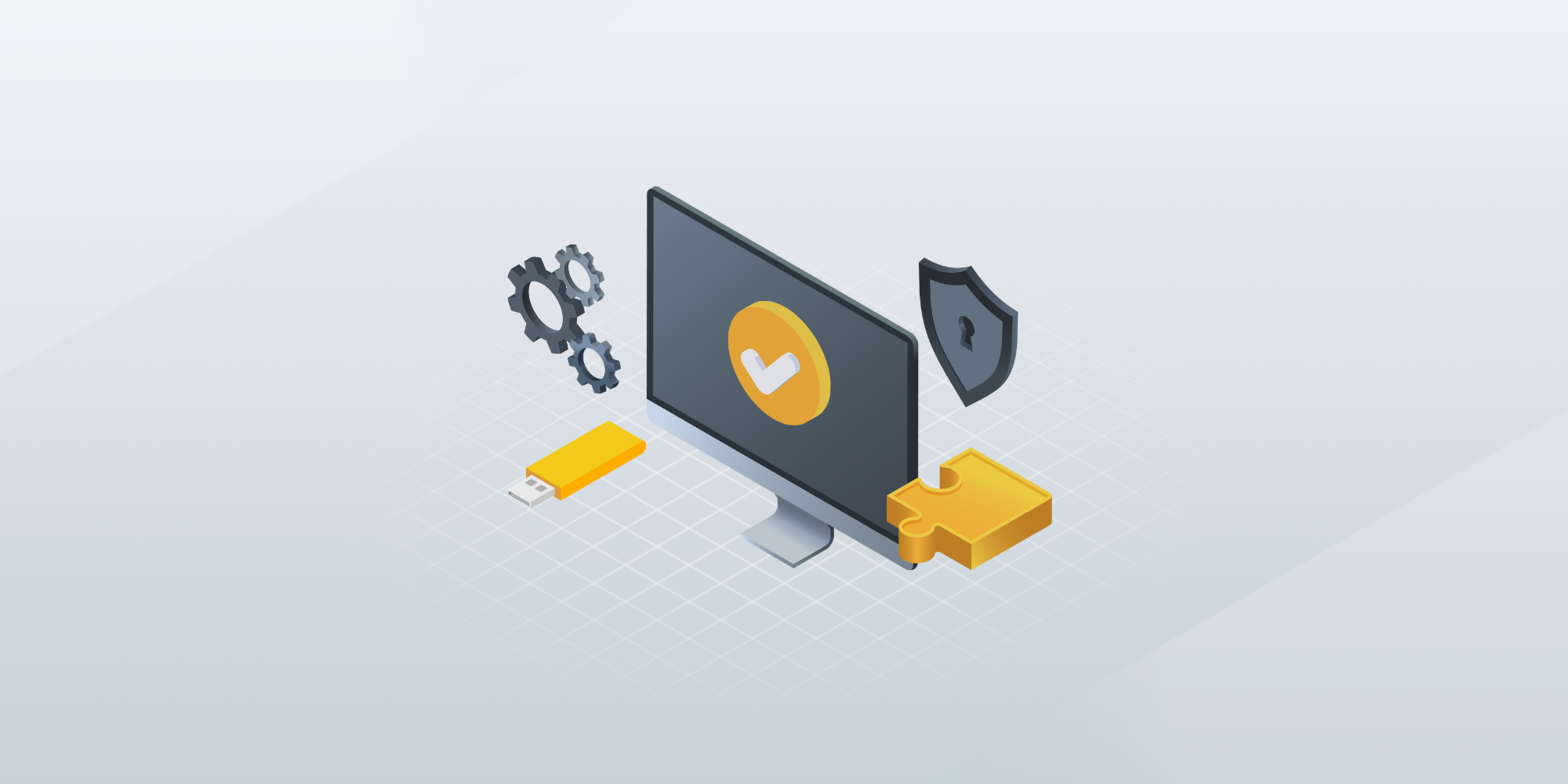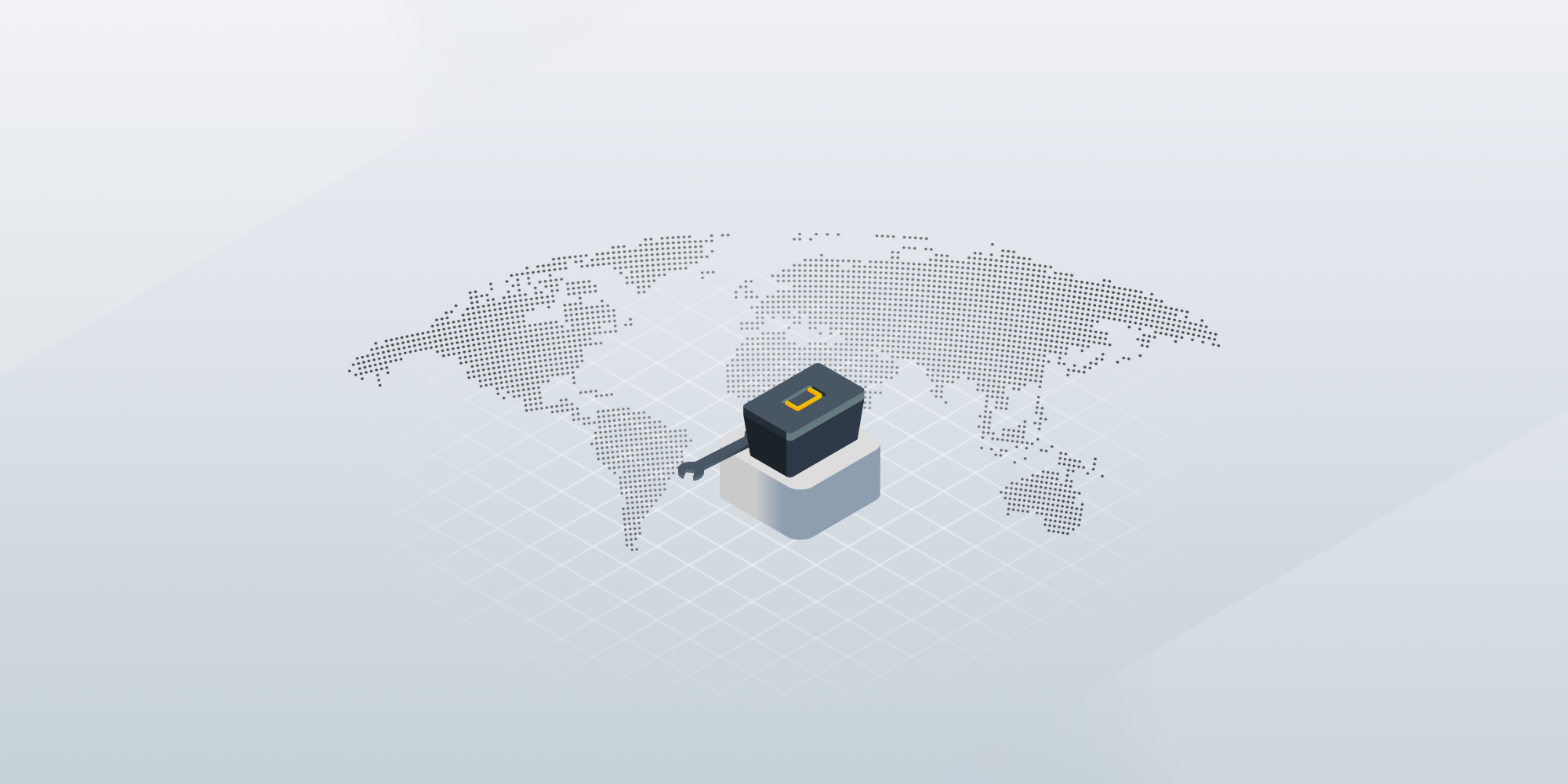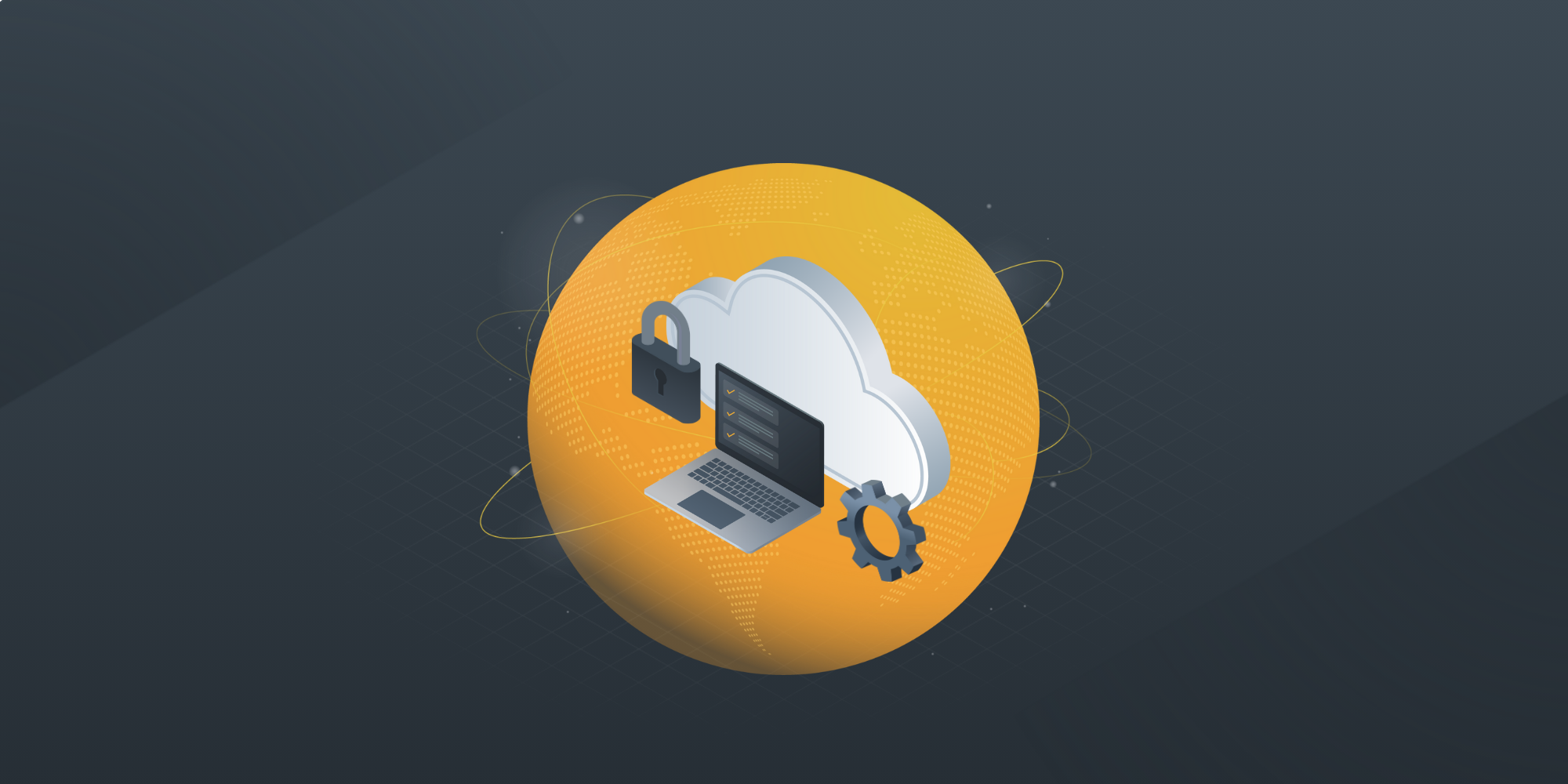The essential IT asset management checklist for modern businesses
 GroWrk Team
GroWrk Team
The global IT Asset Management (ITAM) market is projected to grow from $1.97 billion in 2024 to $2.68 billion by 2029, driven by the need to optimize IT operations and reduce risk.
An IT asset management checklist helps organizations track, manage, and audit assets throughout their lifecycle. This guide outlines eight essential checklist items to improve asset visibility, ensure compliance, reduce costs, and strengthen overall IT governance.
Key takeaways
-
An IT Asset Management checklist improves visibility and accountability, helping teams track assets across their lifecycle and reduce compliance risks.
-
Each checklist item—such as asset identification, inventory tracking, and audit readiness—contributes to stronger governance, financial control, and operational efficiency.
-
Regular use of a structured checklist supports continuous improvement, enabling better audits, optimized resource use, and smarter IT decisions.
.png?width=600&height=300&name=Blog%20Cover%20Template%20(5).png)
An IT Asset Management checklist helps IT managers track and manage all aspects of IT assets throughout their lifecycle. This is the future of ITAM, bringing organization and accountability and ensuring critical tasks are addressed. Using such a checklist can help organizations avoid data breaches and penalties.
Simplifying ITAM with an asset management checklist template makes it efficient and error-free. It allows organizations to optimize resource utilization and find cost savings, ultimately resulting in better financial health.
This guide covers the key aspects of creating and using an IT Asset Management checklist, giving you a comprehensive understanding of IT environment management.
The ITAM checklist in 8 steps
Eight aspects should be emphasized when developing an IT Asset Management checklist. These purposes include being ready for audits, having the right tools, preparing for audits, managing asset inventory, ensuring regulatory compliance, establishing a baseline for IT assets, identifying assets, and integrating IT asset management with other processes.
This procedure might be simplified using an asset management check catalog. Every one of these components is vital to the general plan for the IT asset management audit checklist.
1. Identifying assets
Identifying both intangible properties—including subscription-based software—and physical assets like hardware is the first stage in IT asset management. Management depends on verifying the extent of these assets. Knowing clearly allows companies to be sure every resource is managed and kept track of.
By providing data on asset lifecycles and performance, which is vital for calculating depreciation rates and total value, a checklist helps with budgeting and planning. Organizations can only wisely decide how much their assets should be used and disposed of when they properly identify themselves.
2. Asset inventory management
.png?width=600&height=300&name=In-blog%20image%20template%20(11).png)
Understanding supplies and organizing procurement depends in large part on knowing resources. This is possible with a centralized inventory. A well-managed inventory helps to identify underused assets and lower superfluous expenditures. Compliance rules sometimes call for thorough records of IT resources and use.
Continuous monitoring is provided by an inventory management system's physical inventory methods and automated discovery tools. For compliance, automatic solutions can update physical, virtual, and cloud assets in real-time. Organizations can control possessions from one stage using centralized visibility, therefore enhancing compliance and trackability.
Maintenance of accurate inventory and resource allocation is supported by an IT asset management checklist. By means of timely updates and software patches, regularly keeping track of assets enhances security, which is essential for an ideal IT environment and for total asset accounting.
3. Regulatory compliance

It is essential to use IT asset management software that conforms to rules regarding data storage, usage, and transfer. Rules like GDPR call for a thorough understanding of data management methods and software assets. Handling compliance checks as part of the IT asset management process helps to fulfill financial commitments associated with asset management and therefore boosts governance.
Including compliance checks in IT Asset Management guarantees adherence to statutory rules, prevents possible penalties, and raises security posture. IT asset security and integrity depend on proper auditing and compliance checks.
4. Creating a baseline for IT assets
Having a full IT inventory depends on knowing what to monitor. An IT asset audit depends on a reliable asset inventory to grasp asset location and connectivity. This procedure is also vital for compliance to guarantee that the proper management of all technology assets is tracked.
Responsible disposal of IT hardware assets and financial recovery possibilities depend on a well-defined asset retirement program. One could streamline the asset auditing process and make ready tools using a pre-audit checklist. Generating a baseline for IT assets minimizes risks and accounts for all assets.
5. Implementing IT asset tools

The proper IT Asset Management tools would be chosen by weighing them against operational requirements and corporate goals. Possessing a specialized IT asset management team helps to center activities on matching organizational requirements with tools and processes. Good asset lifecycle management calls for frequent feedback on systems from the larger company and the ITAM group.
Asset management lockers and other automated technologies enable better security and distribution of assets. Tracking present inventory and use data makes it simpler to plan for future IT hardware procurement. Regular asset audits benefit asset valuation and depreciation, which are crucial for financial planning and asset life cycle management.
When added to a fixed asset management system, hardware asset management, and utility asset management, an asset audit can help further streamline these procedures. Always use dependable IT Asset Management software like GroWrk, which can control your business's full IT asset lifecycle. The tools you require are listed here:
-
IT Asset Management software
-
Automated discovery tools
-
Manual inventory techniques
-
Service desk systems
-
Asset management lockers
-
Fixed asset management system
-
Hardware asset management
-
Utility asset management
6. Conducting regular audits
-1.png?width=600&height=300&name=In-blog%20image%20template%20(4)-1.png)
Regular evaluations and audits of the asset inventory assist in determining possible variations as well as regulatory compliance. Proper IT asset checks help to keep an ideal IT environment proactively.
By guaranteeing conformity with legal standards, compliance audits protect against future liabilities and enhance risk management. A company can be helped to be proactive, reduce risk, and guarantee IT possessions are safe and dependable by means of an audit calendar.
Every three years, IT asset audits critical systems to guarantee compliance and safety are conducted. To reduce exposure, systems managing sensitive data should be audited three years at minimum.
7. Integrating IT Asset Management with other processes
To increase total efficiency and performance, IT Asset Management should conform and flow with other processes. By combining ITAM with other corporate operations, one guarantees a consistent strategy of resource and risk asset management.
Emphasize the most important risk areas when determining assets to prevent scope creep. The control of IT assets and accounting processes depends mostly on internal audits. Proactive asset management, thanks to this integration, helps to predict and handle possible problems before they become serious.
Working together, ITAM and service desk staff members promote learning transfer and quicker problem resolution. Integration with artificial intelligence assists in recognizing patterns and trends and informs sensible decision-making and operational efficiency.
8. Continuous improvement in your IT audit processes
A baseline of data at a given time lets one audit and compare with major milestones. Particularly at significant project checkpoints, having rules for generating baselines helps to maintain data accuracy.
Organizations can better manage their assets by means of regular asset reviews, which also offer control and visibility over IT resources. One can identify inefficiencies in IT infrastructure—such as underutilized software and obsolete machinery—using routine audits.
Because companies can streamline procedures and lower expenditures, regular audits improve operational efficiency. Regular checks help improve decision-making regarding resource utilization and allocation efficiency. Continuous improvement in IT asset management depends on a feedback system. Changing the IT environment calls for regular updates of asset management approaches.
Benefits of using an IT Asset Management checklist

Using an IT Asset Management checklist ensures compliance with software asset management licensing and minimizes the risk of fines. The checklist simplifies processes and accountability and makes tracking and managing assets easier. It helps to identify discrepancies and helps organizations to align their assets with strategic goals, thus reducing risks.
A structured approach allows organizations to optimize resource utilization, improve efficiency, and better financial health. The checklist is a guiding tool to ensure all critical tasks are done and nothing is missed. The benefits include:
-
Enhanced compliance: Ensures adherence to software asset management licensing, reducing the risk of legal issues and penalties.
-
Improved accountability: Streamlines processes and facilitates easier tracking and management of IT assets.
-
Risk reduction: Helps identify discrepancies and align assets with strategic goals, minimizing potential risks.
-
Optimized resource utilization: Enables better resource allocation, boosting efficiency and contributing to improved financial health.
How to prepare for an IT asset audit

An IT asset audit helps verify that your records match reality—and that your organization stays compliant with licensing and regulatory standards. Here’s how to prepare:
1. Define the audit’s scope
- Decide what will be audited (hardware, software, licenses, vendors, etc.)
- Align the scope with internal goals or external compliance requirements
2. Assemble your audit team
- Include IT, finance, procurement, and legal where relevant
- Assign roles: inventory reviewers, data gatherers, report owners
3. Review and update asset record
- Make sure your ITAM system has up-to-date data on all assets
- Check for missing serial numbers, outdated locations, or reassigned devices
4. Gather documentation
- Collect purchase orders, license agreements, warranties, and disposal records
- Organize paperwork in a way that’s easy to present and verify
5. Conduct a physical asset check
- Use barcodes or scanning tools to verify assets on-site
- Compare physical findings against your inventory system
6. Document and resolve discrepancies
- Flag anything that’s missing, duplicated, or inaccurately recorded
- Update your system and adjust procedures if needed
7. Schedule regular reviews
- Don’t wait for an audit to happen—build asset reviews into your operations
- Frequent checks help catch issues early and reduce audit stress later
Why GroWrk is the smarter way to manage your IT assets

A checklist helps you stay organized. GroWrk helps you execute—at scale. Built for global teams, GroWrk automates and streamlines the entire IT asset lifecycle so you’re not just compliant, you’re in control.
Here’s how GroWrk elevates your ITAM strategy:
- Global reach: Procure, deploy, retrieve, store, and dispose of IT assets in over 150 countries—without third-party delays.
- Full lifecycle visibility: Track every asset from acquisition to retirement, with real-time status updates and automated reporting.
- AI-powered support: Use GroWrk’s intelligent assistant to troubleshoot device issues, answer employee questions, and reduce IT tickets.
- Secure by design: Enforce compliance with remote wipe, MDM enrollment, identity management, and audit logs.
- Cost control made simple: Get clear, per-device pricing with no hidden fees. Generate usage and budget reports on demand.
- Sustainable by default: Ethically recycle or resell devices with disposal certificates that meet environmental regulations.
If your current asset management process relies on spreadsheets, disconnected tools, or delayed vendors, GroWrk gives you the control, speed, and visibility you’ve been missing.
Request a demo today to see how GroWrk can transform your IT asset management.
Frequently Asked Questions
Why is an IT Asset Management checklist important?
An IT asset management checklist is essential for organizing tasks, ensuring compliance, and optimizing resource utilization. This structured approach helps prevent costly oversights and enhances efficiency.
What are the key elements of an IT Asset Management checklist?
A comprehensive IT Asset Management checklist should include identifying assets, managing inventory, ensuring regulatory compliance, establishing a baseline, implementing relevant tools, and preparing for audits. Regular audits and integration with other processes are also crucial to maintain effectiveness.
How does asset inventory management enhance security?
Asset inventory management enhances security by maintaining an accurate inventory and ensuring timely updates and software patches, preventing potential security breaches.
What role does regulatory compliance play in IT Asset Management?
Regulatory compliance is crucial in IT Asset Management. It ensures adherence to laws regarding data handling, which helps avoid fines and enhances security. By implementing compliance measures, organizations protect their assets and maintain stakeholder trust.
How can regular audits improve IT Asset Management?
Regular audits enhance IT Asset Management by identifying discrepancies, ensuring compliance, and optimizing resources, leading to improved efficiency and cost savings.





